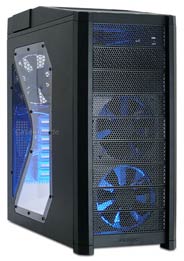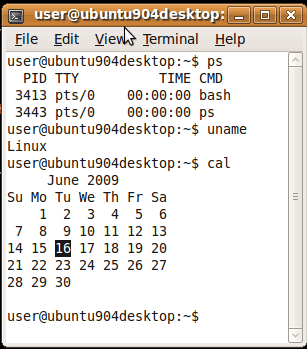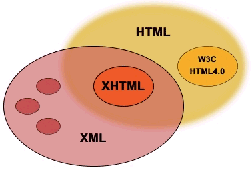My buddy eDawg just built himself a new beast. Here's a copy-n-paste from the invoice (totaling $1325 + tax). He's using dual flat-panel monitors imported from a previous system. See here:
- Case Antec | Nine Hundred Black Steel ATX Retail » $100
- PSU Corsair | CMPSU-750TX 750W SLI + CrossFire Ready Retail » $110
- Motherboard ASUS | P6T Deluxe V2 LGA 1366 X58 Intel Chipset Retail » $290
- CPU Intel | Core i7 920 Bloomfield 2.66G 45N Quad-Core - Retail » $290
- 2 x Memory | Corsair XMS3 6GB DDR3 PC3 - Retail » $320
- VGA XFX | Radeon HD 4870 1G 256-bit GDDR5 HD-487A-ZWFC PCI Express 2.0 x16 Retail » $145
- Hard Drive 250G | Western Digital Caviar Blue 7200-RPM 8MB Cache SATA2 - OEM » $45
- DVD Burner Lite-On | Black 24X DVD+R 8X DVD+RW 8X DVD+R DL 22X DVD-R 6X DVD-RW SATA - OEM » $25
- Windows 7

This system has 12 gigs of memory (2 x 6-gig sticks). That's downright decadent. I think he could arrested for having so much memory (without a permit). We hate you, eDawg. Actually, that motherboard can handle (up to) 24 gigs .. in triple-channel mode.
I said, "Dang, you probably oughta call your local power company and let them know whenever you're fixin' to start that beast .. so they can tweak bus frequency up to 62-cycles, so you don't bring down the whole western grid."
I asked why he didn't opt for a giant 2-TB drive for storage, or a 10K-rpm Raptor to run his system & programs .. or better yet » a solid state drive (drool).
I remember back when we ordered and built his very first custom system. That wasn't long after eDawg's dad married my friend » Maria. We all lived in this big 5-level Euro-style mansion that eDawg's dad built (which later sold for several $mil) cut into the hillside high above Laguna .. with a killer 180-degree view of the Pacific. Ah, the good ol' days .. sitting out on the deck and watching the sun go down.
 The
The ![Reblog this post [with Zemanta]](http://img.zemanta.com/reblog_e.png?x-id=243cb0e5-a595-427d-8989-b3c70a91a678)

 "No," I answered, waiting for his mom to come pick him up.
"No," I answered, waiting for his mom to come pick him up.
 While
While  Definitely takes longer to get up-n-running when
Definitely takes longer to get up-n-running when  How can $50 billion not be enough? That's billion with a 'B' .. as in » $50,000,000,000.00 .. enough to turn 50,000 paupers into millionaires .. 25,000 hobos into multi-millionaires. Feed the hungry (steak & lobster for a lifetime).
How can $50 billion not be enough? That's billion with a 'B' .. as in » $50,000,000,000.00 .. enough to turn 50,000 paupers into millionaires .. 25,000 hobos into multi-millionaires. Feed the hungry (steak & lobster for a lifetime).


